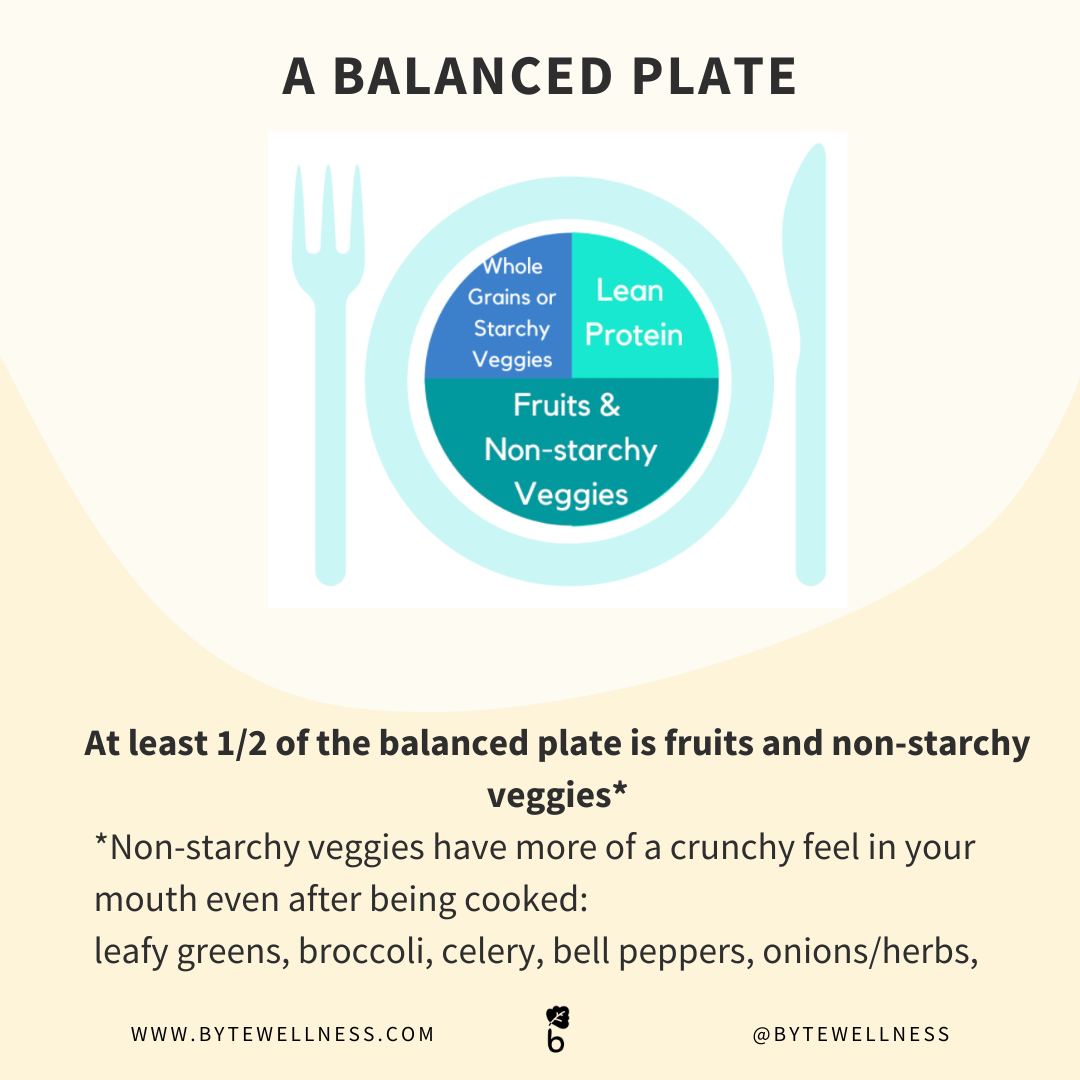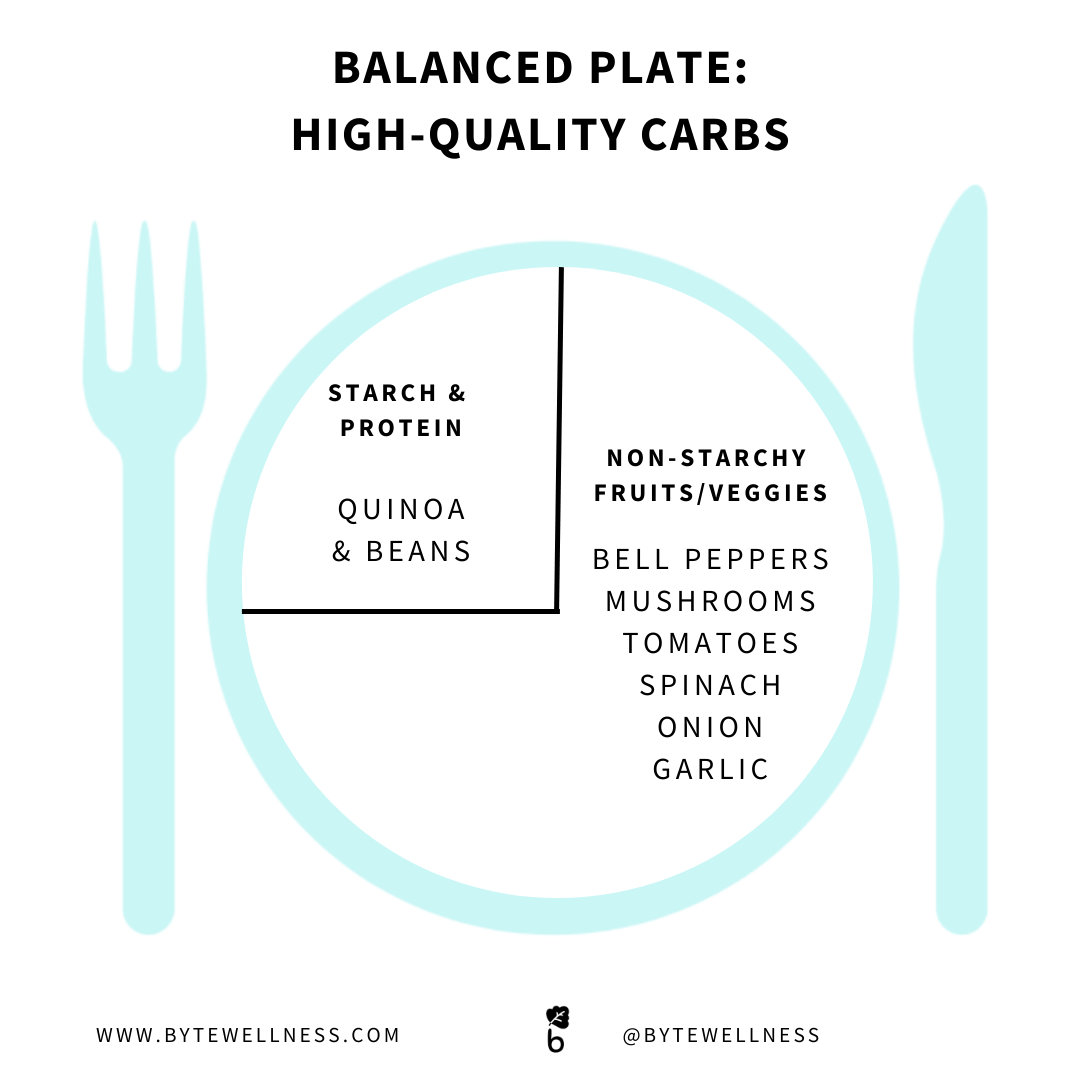Balancing the Chipotle Vegan Bowl
Hi Byte Wellness Fam!
Here’s hoping you have a restful and reflective Easter, Passover, or Ramadan if you celebrate them.
Here we are again! If you’re getting the weekly newsletters, but you’re missing your invites to the weekly workshops, make sure to sign up for our brand new private online community. You’ll get new connections with other community members AND daily wellness texts, weekly invites to the workshops, plus ALLLL the recordings of past workshops.
Okay, following up our Chipotle Vegan Bowl cooking class (see recording here)…remember the ABCs of cooking Plant-Based Meals?
Appetite (they’re satisfying)
Balance (they have helpful nutrient proportions)
Color (they represent the rainbow and a variety of phytonutrients)
In order to see how our Chipotle Vegan Bowl recipe delivers nutritional BALANCE, we have to break down some key facts about nutrients. Before we do that, can you guess where each of the ingredients falls on the balanced plate below?
Ingredients: quinoa, black beans, garlic, red onion, mushrooms, tomatoes, jalapeño, bell peppers, avocado, cilantro, spinach
Click through the picture to see if your answers were right.


Nutrient Basics
Nutrients are the building blocks of food. They’re the helpful parts your body can’t live without. There are micronutrients (literally teeny tiny nutrients) and macronutrients (larger nutrients). Macros are protein, carbs and fat. You’ve probably heard of these, because let’s be honest, who hasn’t? I’m also willing to bet that most of what you’ve heard about macros is that they’re bad for you.
The internet is filled with posts and videos about how to “limit your macros”. But, it’s not that simple. Remember the 2nd principal of Plant-Based Cooking? BALANCE.
Macronutrients are good for your body in moderation. What does that look like? In general,
Let’s take a super simple look at the pros of eating just enough macros and the cons of eating TOO MANY:
1) Protein- In your meat (poultry, fish, beef), plants (beans, nuts, some grains)
Pro: Protein builds muscles and DNA. The amino acids that are the building blocks of the protein we eat drive chemical reactions throughout our body.
Con: In excess, unnecessary protein gets stored as fat.
2) Carbohydrates (carbs)- Sugar, Starch and Fiber
In your grains (pasta, rice, bread), starchy veggies (potatoes, beans), desserts (cake, cookies, pastry), snacks (chips), sweetened drinks (soda)
Pro: Carbs give you energy to think and move. Fiber improves gut health, blood sugar, heart health and more.
Con: Too much energy turns into unnecessary fat. Also, too many added sugars and refined starches can throw your blood sugar off balance AND can lead to increased inflammation, excessive weight gain, type 2 diabetes, heart disease and more.
3) Fats- Trans-saturated Fat, Saturated Fat, Unsaturated Fats
In your meat and dairy (poultry, fish, beef, eggs, milk, cheese), plants (beans, nuts), oils (butter, canola oil, olive oil) , processed foods (pizza, fast food, desserts).
Pros: Fats give you more energy than carbs. Fat helps you absorb important vitamins, and it build your hormones and nerves!
Cons: Too much energy gets stored as fat. Too much of the wrong type of fat can increase risk of heart disease.
Don’t forget to run through our discussion questions from the week.
Discussion Questions
For you, is there anything challenging about going meatless for a day?
What is it?
Happy Healthy Living,
Dr. Wuse
